Written by Jeff Tan
In April 2023, sightings of the Black-winged Flycatcher-shrike Hemipus hirundinaceus and White-crowned Hornbill Berenicornis comatus drew crowds to Pulau Ubin, specifically around the Chek Jawa Boardwalk area where both of these species were seen. With the large influx of birders, many uncommon birds that might have been missed otherwise were spotted, including the Cinereous Bulbul Hemixos cinereus, Lesser Green Leafbird Chloropsis cyanopogon, and the topic of this article, the Black-and-red Broadbill Cymbirhynchus macrorhynchos. Though my several trips to Ubin have ended up bearing no fruit, the recent sightings of this once extirpated bird inspired me to write this article about the five species of broadbills known to Singapore, why we might be seeing some of them in recent years, as well as the possibility of them reestablishing in Singapore.
What’s so special about the Black-and-red Broadbill sightings at Chek Jawa?
There are eight recent sightings of the Black-and-red Broadbill in Singapore, 5 of which were in the past five years.
The fact that four sightings have been recorded over the past year is quite astonishing, especially for a bird that became locally extinct around 1949 (Wang & Hails, 2007). Though not an uncommon bird by any means in the Malay Peninsula, deforestation and habitat loss drove this bird out of Singapore, where it was only sighted again in 2004 (Wells, 2007). Currently, the on-and-off sightings of this bird suggests that it is a rare visitor, likely from the forests of Johor.
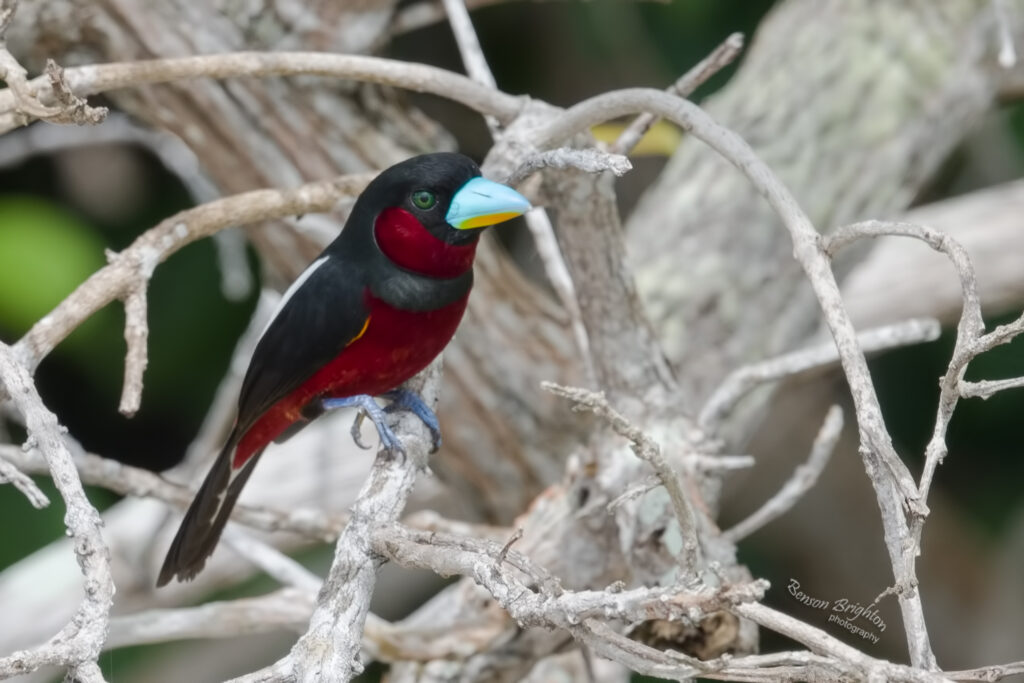
The recent sighting at Chek Jawa was first seen on 17 Apr 2023, and subsequently seen several times every day until 25 Apr 2023. However, the bird photographed on 25 Apr 2023 by Koh_Wild was different from the previous individual(s?), evident from the ring on the bird’s right tarsus. This individual is the only Black-and-red Broadbill ringed in Ubin to our knowledge.
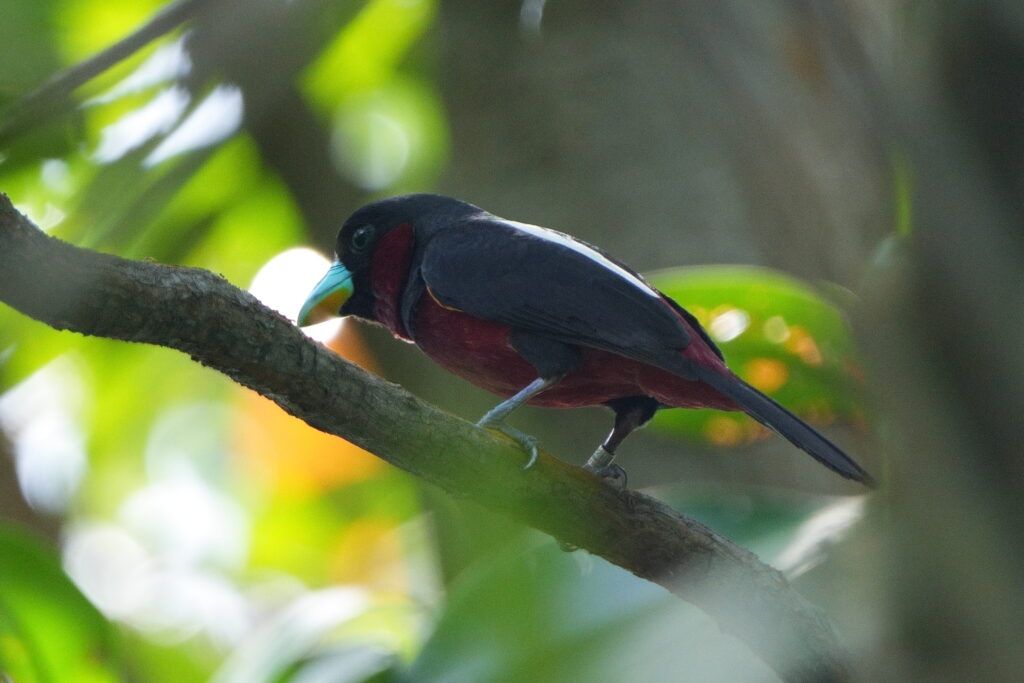
The presence of a ringed and an unringed bird indicates the presence of at least two individuals on Pulau Ubin at the same time, providing promising news that the Black-and-red Broadbill might perhaps breed and potentially re-establish itself in Singapore. Recently, breeding behaviour has been observed in another previously rare non-breeding visitor, the Lesser Adjutant, suggesting that sites like Sungei Buloh and Chek Jawa could provide suitable habitats for these birds. The protection and enhancement of Singapore’s limited mangrove habitats in these places would be important if we hope to witness the return of these species.
Despite these sightings being great for Singapore (and its photographers), they are quite worrying for the region, as it suggests that there might be habitat loss in neighboring Johor. In recent years, Johor has continued developing, leading to a predictable loss of forests due to logging, development and agriculture, which may cause some birds which require higher quality habitat to relocate. As such, Pulau Ubin and Sungei Buloh, both nature reserves located in the north of Singapore, would likely be one of the first landing points for birds flying south from Johor, which may explain the recent sightings of many uncommon birds there.
What about the other broadbills?
Green Broadbill Calyptomena viridis
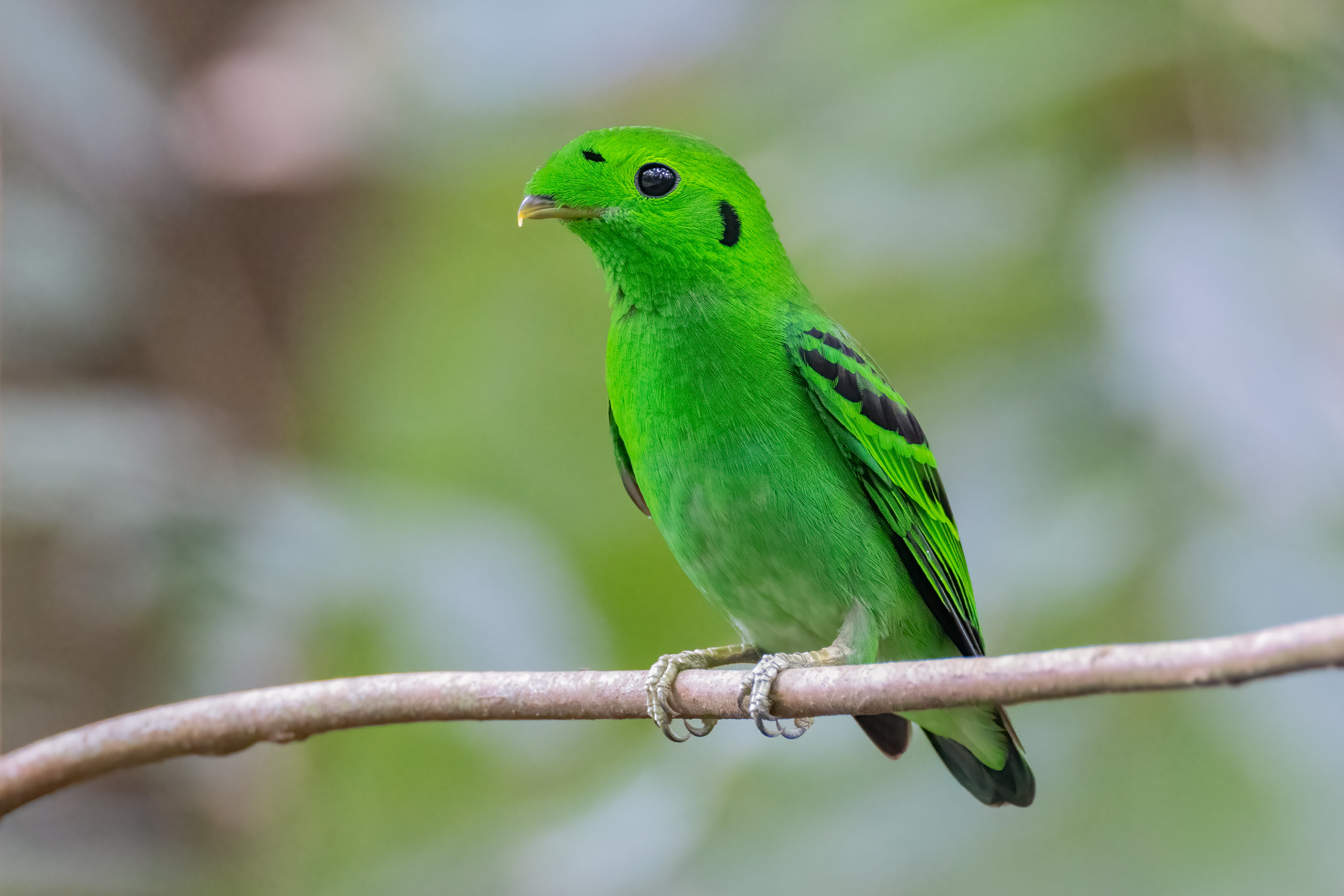
Another broadbill species that has recently been seen in Singapore is the Green Broadbill. The Green Broadbill went locally extinct in December 1941, where it was last spotted in Bukit Timah Nature Reserve (Gibson-Hill, 1949). There have been three sightings of this bird since then, each with one individual. The first sighting was found at East Coast Park in November 2014, while the other two were found in Pulau Ubin.
The Green Broadbill is from the family Calyptomenidae, unlike the other broadbills in this article that belong to the family Eurylamidae. Unlike the other broadbills, the Green Broadbill is frugivorous, and the combination of fruiting trees in Singapore, suspected habitat loss in Johor and the Broadbill’s own ability to disperse in search for food could have resulted in these sightings.
Other extirpated broadbills
Besides the Black-and-red and Green Broadbills, Singapore was historically home to three more species of broadbill, which have not been seen locally since their extirpation.
Banded Broadbill Eurylaimus javanicus
The Banded Broadbill is the most recently extinct of the three, being last seen in the mid-1920s (Gibson-Hill, 1949). It is a relatively large broadbill that is relatively widespread across the Indomalayan region, with a distinct purplish plumage, bright blue beak, yellow-streaked black wings and a black necklace. It inhabits a wide array of forests, perhaps explaining its later disappearance as compared to the other two extirpated broadbills.
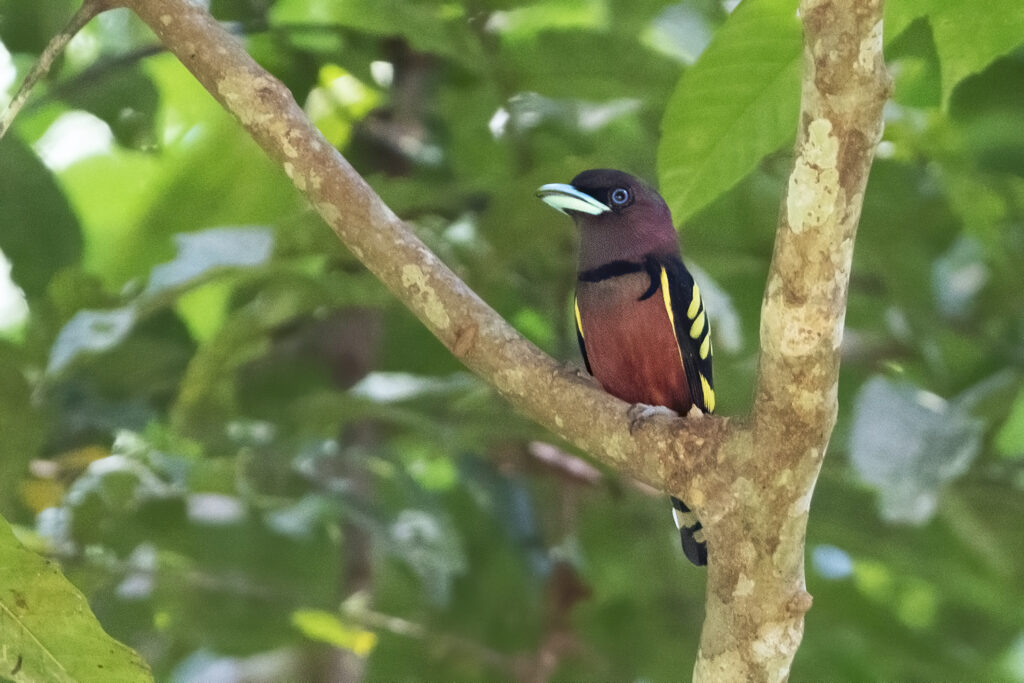
Black-and-yellow Broadbill Eurylaimus ochromalus
The Black-and-yellow Broadbill Eurylaimus ochromalus is much smaller than the other Eurylamidae broadbills once found in Singapore. It has a black head and upperparts, with a distinct white necklace, bright blue bill and yellow streaks on its wings. It was last seen in the 19th century, inhabiting lowland primary and secondary forests, as well as plantations (Hume, 1879; Wang & Hails, 2007).

Dusky Broadbill Corydon sumatranus
The Dusky Broadbill Corydon sumatranus is a widely distributed broadbill across Indomalaya, Sumatra and Borneo, found in heavy jungled habitats along rivers. It is a stocky, charcoal grey broadbill with a large pink bill and a brown eye ring. It was last seen in Singapore in the 19th century as well (Hume, 1879; Wang & Hails, 2007).
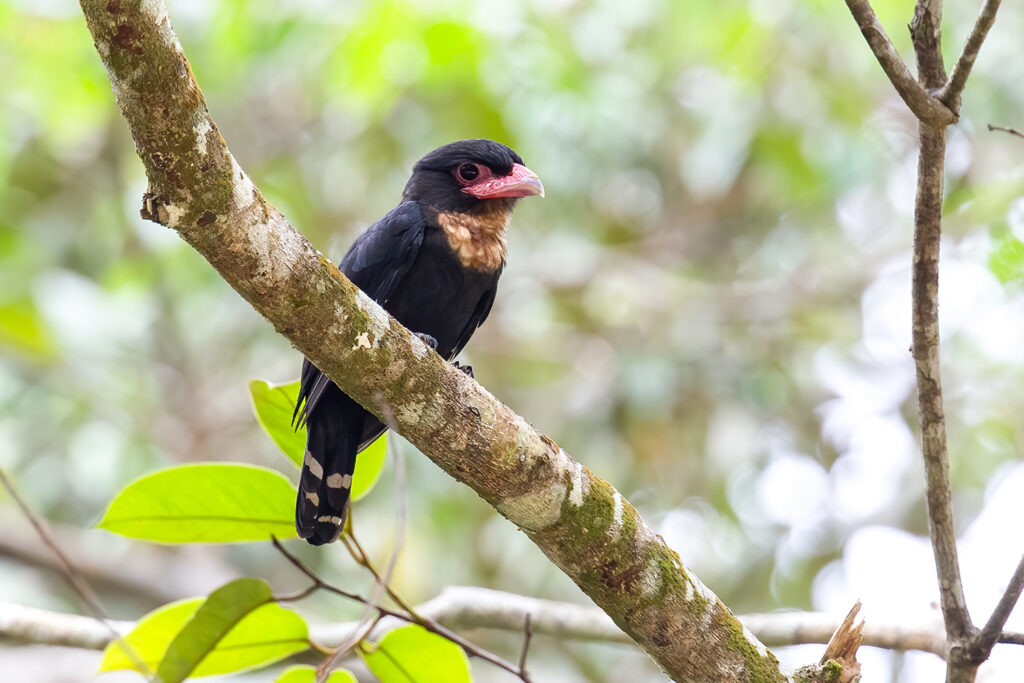
If any of these broadbills appear once again on our shores, it would definitely be extremely exciting for us here in Singapore. However, along with the excitement from such a rare sighting, we do need to pause to think about the conservation of their habitats in the region. Birders like us are going to be the first to spot such species, and hence we bear a great responsibility in sharing such information to provide a better understanding of the birdlife not just in Singapore, but in the region as well. Happy birding!
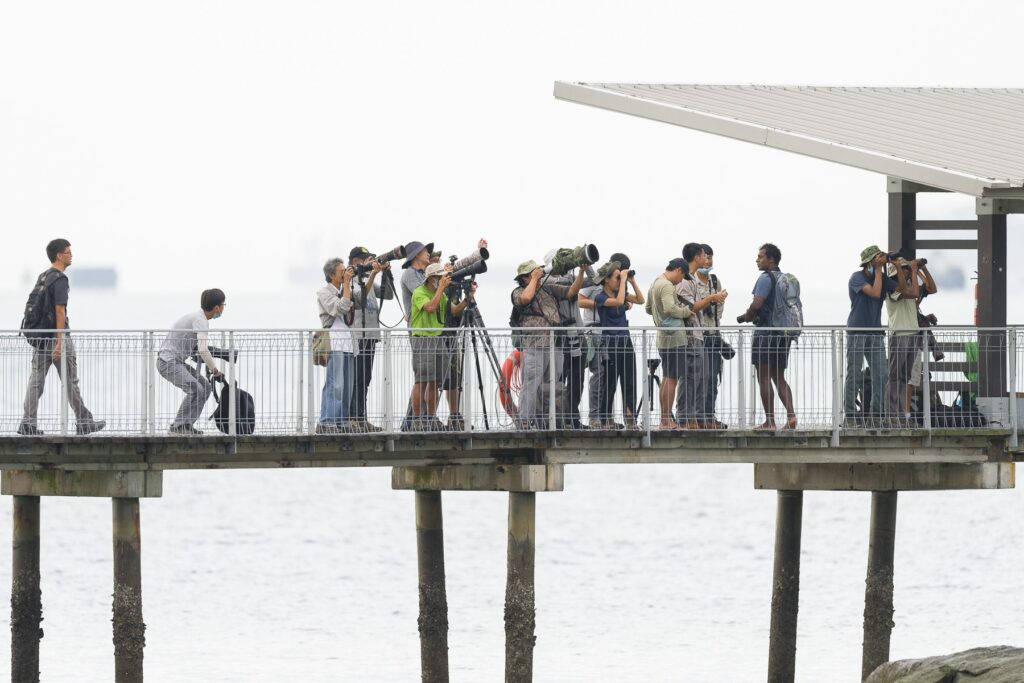
References
Wells, D. R. (2007). The Birds of the Thai-Malay Peninsula (Vol. 2). Christopher Helm, London.
Wang, L. K. & Hails, C. J. (2007). An Annotated Checklist of the Birds of Singapore. The Raffles Bulletin of Zoology, 15(Suppl), 1–179. Link
Hume, A. O., 1879. A first tentative list of the birds of the western half of the Malay Peninsula. Stray Feathers, 8, 37-72. Link
Gibson-Hill, C.A. (1949). An annotated checklist of the birds of Malaya: an annotated list of the birds occuring, or known to have occured, in the territories of the Federation of Malaya and the Colony of Singapore. Bulletin of the Raffles Museum, 20, 5-299. Link

